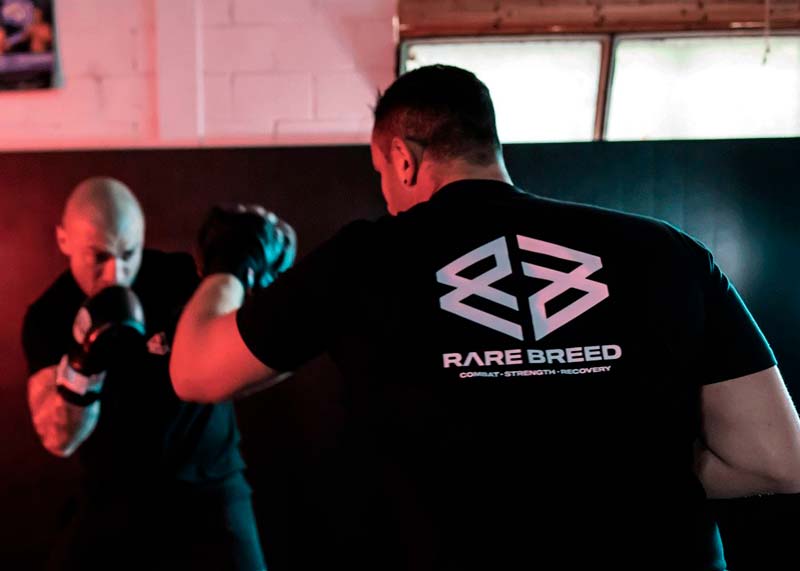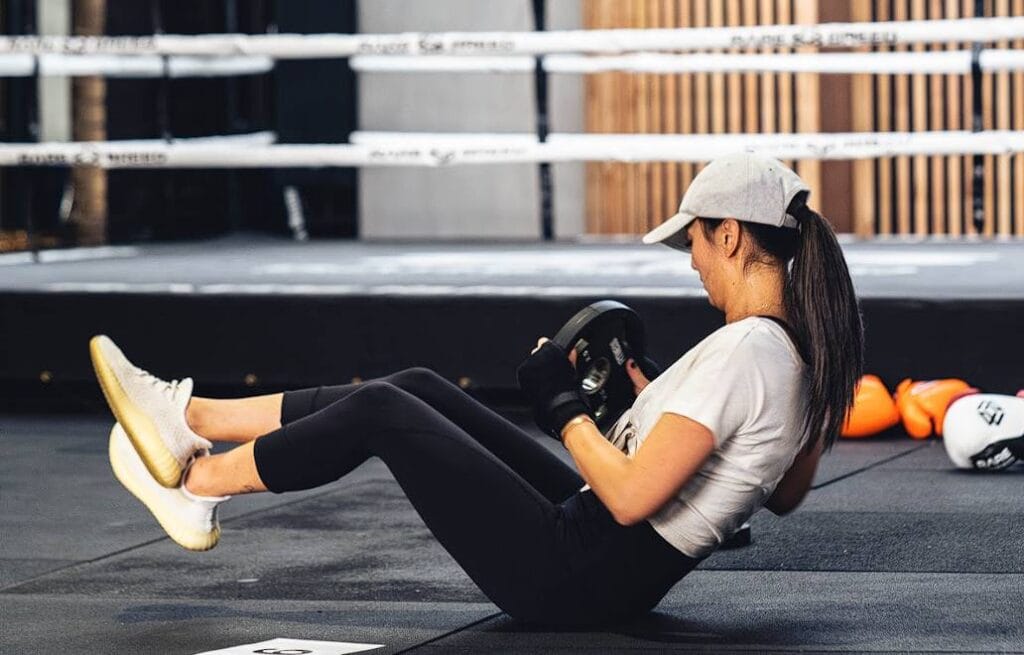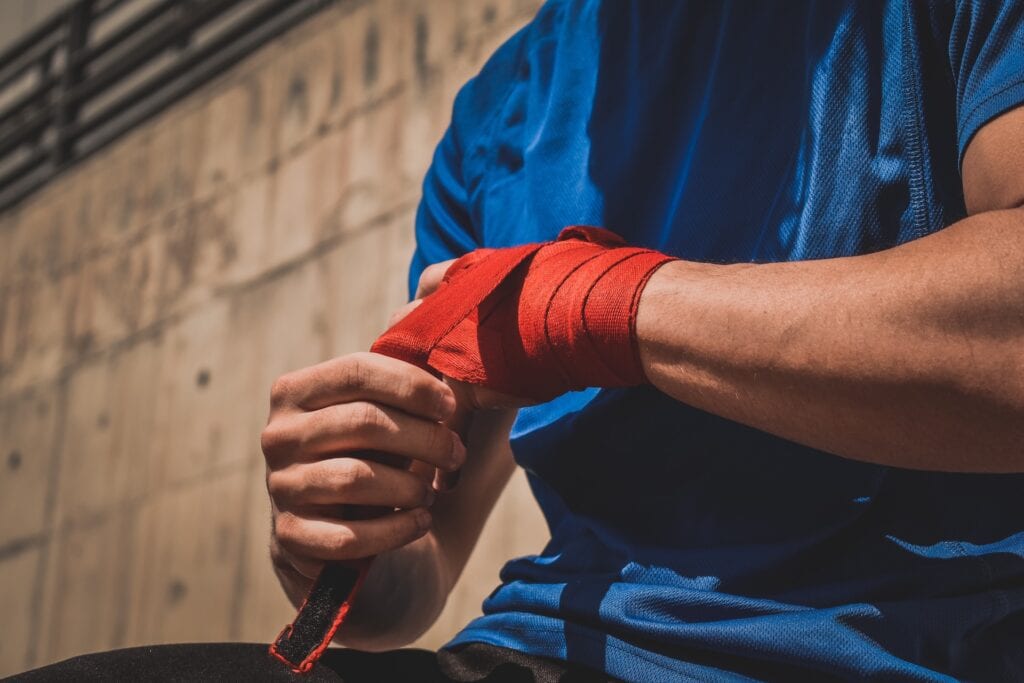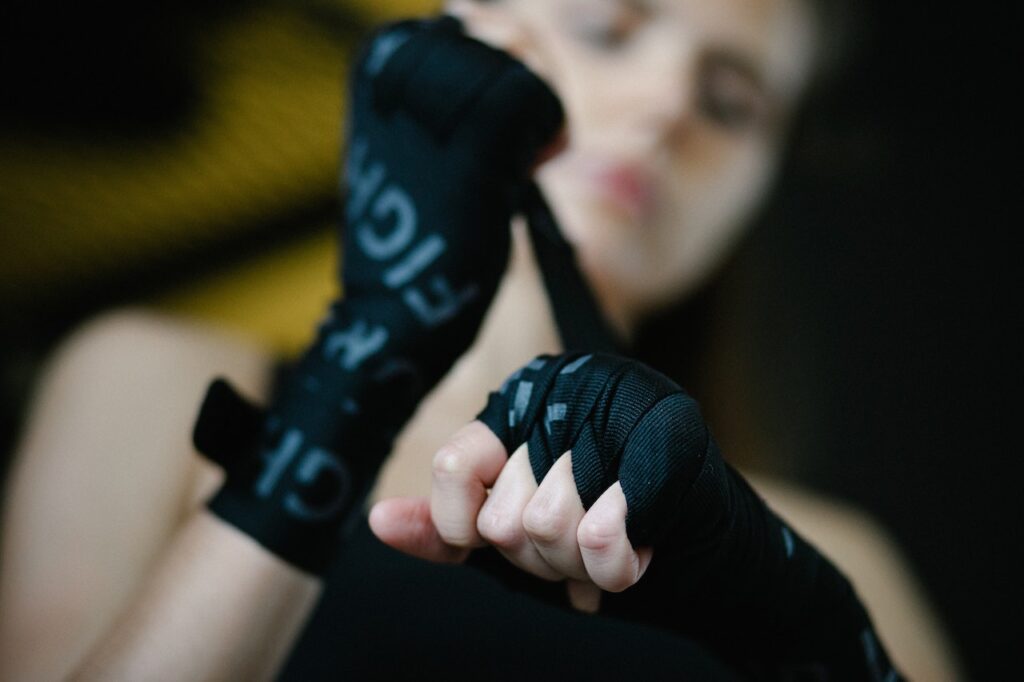Boxers weighing more than 200 pounds compete in the heavyweight division. As a result, heavyweight boxers need to incorporate additional training methods into their routines to retain their agility, strength, endurance, and flexibility. It is necessary because of their greater proportions.
Boxers of all weight classes can apply the techniques used in heavyweight boxing to step up their training, even though boxing fans believe that heavyweight training is in a category all by itself.
Heavyweight boxing is frequently referred to as a whole separate sport. Legendary heavyweights such as Wladimir Klitschko, Mike Tyson, and George Foreman have all boasted knockout percentages of over 80% in their careers. Since that heavyweights are a distinct species, what kind of workout routines should big guys follow?
How to Train Like a Heavyweight Boxer
HOW DO YOU BECOME A HEAVYWEIGHT BOXER?
To compete in the heavyweight division in boxing, you must first reach the weight criteria, or at the least, be in a range close enough to it so that you may meet it with the appropriate boxing training and diet. The next step is to educate yourself on effectively training like a heavyweight fighter.
HOW DO HEAVYWEIGHT BOXERS TRAIN?
Heavyweight boxers typically train with a regimen that includes strength-training moves, such as the ones listed below, and conditioning drills. In addition, cross-training is incorporated into heavyweight boxing fitness in various forms to facilitate the development of endurance, enhance balance, and extend the range of motion.
The following are some of the fundamentals of heavyweight boxing conditioning:
- Endurance
- Training Balance and Agility Training
- Dietary Balance
- Weight Training
- Endurance Training
WHAT IS A HEAVYWEIGHT BOXER WORKOUT?
Training for a heavyweight boxer includes all the fundamental drills in any other boxing practice, focusing more on speed, agility, and flexibility.
Training for heavyweight bouts demonstrates that boxing is about more than just raw strength alone. Combatants with greater body mass require more effort to maintain flexibility and equilibrium.
Because of the increased muscle mass, it is more difficult to maintain the flexibility necessary for the sport. In addition, maintaining enough stamina to remain in the ring for the subsequent round can be more challenging.
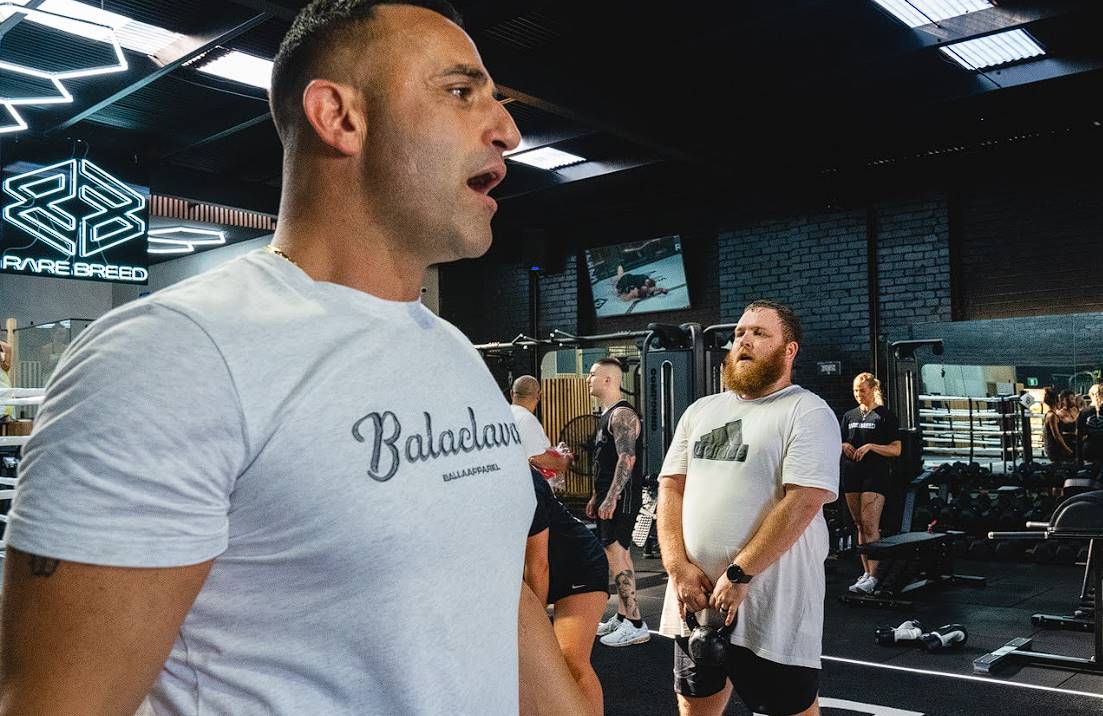
HOW MUCH DO HEAVYWEIGHT BOXERS RUN?
Running is one of the most effective ways to build endurance and stamina, and it's also fun! When training, heavyweight boxers will run anywhere from two to six kilometres per day, three to four times per week.
Roadwork regimens for newbies should first consist of shorter distances completed at a more leisurely pace. Boxers of all skill levels can benefit tremendously from interval training, consisting of alternating bouts of one-minute sprints every five or ten minutes and short climbs.
DO HEAVYWEIGHT BOXERS LIFT WEIGHTS?
Indeed, heavyweight boxers do strength training with weights. Of course, boxers of all weight classes can benefit greatly from including weightlifting as part of their training regimen. Still, heavyweight boxers, in particular, should make this an integral part of their routine.
What Weight Training Do Boxers Do?
Boxers at the professional level almost universally engage in weightlifting. Boxers in the heavyweight division face the additional challenge of maintaining their competitive edge within their weight class.
Boxers engage in weight training, which includes exercises that target the abdominal region, the arms, and the legs To improve their overall strength.
The followings are some of our favourites and the primary focus areas:
Crunches (core)
Grasping a weight with both hands and bringing it close to the body to maintain stability will provide additional resistance for the standard crunch. Next, try twisting it to either side to intensify the workout for your obliques.
Deadlift (core and legs)
In front of the barbell, stand with your feet about the same distance apart from your shoulders. As you reach for the bar, bend at the hips while keeping your back straight. As you elevate the barbell to a standing posture, keep your back in a straight position the entire time.
Stationary Lunges (legs)
Take one step backward as you go into a lunge position while holding dumbbells in both hands. Bring the opposing foot forward, then repeat the action with the other foot.
Squats (legs)
Put both of your hands around the handle of a dumbbell or kettlebell. Maintain a stance in which the distance between your knees is slightly more than the width of your shoulders. While keeping your back straight, bring your butt down until it is parallel to the floor. Then, use your legs to pull yourself back up to a standing position.
One-Arm Bent Over Row (arms)
To perform this exercise, place your upper body on a table or bench for support, and then bend your torso at the hips to create a 90-degree angle. Next, using the muscles at the back of your arm (triceps), draw the weight towards your body until your elbow is bent at a 90-degree angle while holding a dumbbell in the opposite arm.
Bicep Curls (arms)
It would help to stand with your arms by your sides and a dumbbell in each hand. Your palms should be facing away from you. Bring the weight toward your shoulder by bending one arm at the elbow and bringing it closer to your body. Reduce the load, then perform the exercise with the other arm.
Front Lateral Raises (arms)
Stand with a dumbbell in each hand and your arms by your sides. Your knuckles should be facing away from you. Raise the weight while maintaining the straight position of your arm up until it is perpendicular to your torso. Reduce the load, then perform the exercise with the other arm.
Heavyweight Boxer Deontay Wilder's 4-Day Strength-and-Agility Workout Program
Boxer Deontay Wilder is widely considered the finest in the heavyweight division in the world. In almost 43 bouts throughout his career, he has not yet suffered a defeat in the boxing ring, and he has gained the distinction of being a knockout artist by concluding 41 of his wins with a knockout victory. Not too shabby for a guy who started boxing when he was 20 years old.
Wilder's presence in the heavyweight category has been nothing short of electrifying, earning him the nickname "The Bronze Bomber" due to his bronze medal performance in the 2008 Olympics (and, yes, penchant for knockouts). Wilder's strong emphasis on training and getting himself completely ready for each fight contributes to his unprecedented success.
Joey Scott, Wilder's trainer, has been by his side for a significant portion of his career. They have worked together to develop training regimens that improve Wilder's ability to compete against individual opponents while also maximising his agility, speed, and raw power.
Deontay Wilder's 4-Day Workout Program:
Before beginning each day's training, Wilder performs a dynamic warmup of stretching and movement activities. Here are the instructions. Try out this exercise to get your body ready for the day.
Monday
Drills for Cone Agility: Place two cones three feet away from one another, then go laterally around the cones in a circle. It would help if you concentrated on lateral movement and steadiness while changing directions. Then, carry out two sets with three reps each (one revolution around the cones is one rep).
Form Run Drills: On the first set, perform the foot-over-ankle movement; during the second set, do the foot-to-shin movement; and on the third set, do the foot-over-knee movement. You can utilise the identical cones from the previous practice for distance measurement. Carry out three sets of four repetitions, with a rest period of one minute between each rep and four minutes between sets.
Cool Down/Abs Finisher: Do as many situps, crunches, Russian twists, woodchops, reverse crunches, and other core moves as you feel comfortable. Complete a total of 200 reps.
Tuesday
Pool Intervals:
- Left Leg Bounds: One set of four laps (1 lap = one trip around the pool).
- One set of right leg bounds with four complete circuits
- Double Leg Bounds: 1 set x 4 laps (alternate bounds between left and right)
- Split Jumps: 1 set x 4 laps
- Squat Turns: 1 set x 4 laps
- Wall Leg Kicks: 6 sets x 3 minutes
- Relaxation: a swim of six laps
Wednesday
Active Recovery Day: Bodywork consists of massage and rehabilitation activities.
Thursday
Put your cones up for rudimentary hops at a comfortable distance, and use that distance for each set.
- Hops with one leg only: two sets with two reps each (each rep should be back and forth)
- Double Leg Hops: 2 sets x 2 reps
- Two sets of forward hop with two repetitions per set
- Hops sideways: 2 sets with two repetitions per set
Drills to improve agility around cones (the same as the program on Monday): 2 sets of 3 repetitions around the cones
Weights
Note: Use a variety of weights, reps, sets, and rest periods that are suitable for you.
- Deep Back Squats: 4 sets x 8 reps
- Dumbbell Reverse Lunges (45 lbs): 4 sets x 10 reps
- Deadlifts (225 lbs): 4 sets x 8 reps
- Leg Extensions: 4 sets x 12 reps
- Single-leg calf raises with a dumbbell (45 pounds): four sets of ten reps each.
- Pressing the leg with one leg only: four sets of ten reps on each side
- Hip extensions with one leg: four sets of ten reps each
Friday
Sand Pit Plyometric Moves: Although Wilder conducts these exercises in the sand, you may perform them on a mat or in the gym. Do four sets of each exercise with a rep time of thirty seconds. Rest at 1:30 between rounds.
- Squat Jumps
- Single-Leg Knee Tuck Hops (30 sec. per side)
- Squat Jumps
- Lunge Jumps (30 seconds on each side; do not swap sides between reps)
- Pause Squats
- Leg Hops (30 sec. per side)
- To the High Knees
Weights:
- Clean Pulls: 4 sets x 8 repetitions
- Lunge Position Shoulder Press with Dumbbells (35 pounds): 4 sets of 8 repetitions
- One-Arm Dumbbell Row with a Weight of 50 Pounds: Do 3 Sets and 8 Reps
- The dumbbell bent over a row with 15 pounds requires three sets and eight reps
- Four sets of 8 repetitions with a dumbbell incline press (50 pounds)
- Dumbbell Arm Curls (30 lbs): 4 sets x 8 reps per side
- Dumbbell Front Lateral Raises (15 lbs): 3 sets x 8 reps
How to Train Like Heavyweight Boxing Champ Anthony Joshua
Anthony Joshua has the kind of rock star ring entrances that make Apollo Creed's James Brown-assisted walkout in Rocky IV appear like a mere afterthought. In other words, Joshua's entrances make Creed's walkout look like an afterthought.
Just ask the British boxing record audience of 90,000 rowdy fans who jammed into Wembley Stadium in April 2017 to watch him defeat Wladimir Klitschko through an 11th-round technical knockout.
Yet the unbeaten unified heavyweight boxing world champion has just as flashy of a fitness program to match, as proven by the one-of-a-kind workouts that he frequently posts on Instagram for his 6.7 million followers to watch. His fitness routine is equally as flashy as his boxing career.
Anthony Joshua's Heavyweight IG Moves
Barbell Single-Leg Romanian Deadlifts (RDL)
Three sets of 8 reps
When boxing as Joshua does, good balance and leg strength are necessary for throwing big fists. The unbeaten heavyweight champion addresses these issues by having him perform rigorous single-leg barbell RDLs.
Joshua asserts that he doesn't normally use a particularly heavy weight when performing the exercise, yet, he is well aware of the benefits of including the barbell single-leg RDL in his arsenal.
So, why can you squat 200 kilograms (about 440 pounds) with both of your legs, but if I took away one of your legs, you could only do 20 kilograms (44 pounds)? Joshua ponders. It's all about developing your sense of equilibrium. You do it by bending forward at the waist to strengthen your core, but I can't ignore my hamstrings and lower back.
Inverted Hang
2 minutes
Joshua published an image to Instagram earlier this month that showed him hanging upside down outside the ring, exposing his chiselled figure to full effect. The image received more than 422 thousand likes.
Yet, AJ sees this maneuver less as an exercise and more as a stretching opportunity. So, what is its primary purpose? To completely stretch out his frame that is 6 feet 6 inches tall so that he can continue to feel flexible.
Even though we're standing up constantly, gravity still tries to draw us down. Joshua asserted that since there is always a great deal of pressure from the top down, this is simply inverting the kinetic chain and opening up. If I hang you upside down, all your money will fall out, allowing your whole body to spread out since it creates more space.
Joshua suggested beginning with an inverted hang for one minute and gradually adding a minute as you become more comfortable with the position. Then, make sure that you are properly and securely fastened down. We came across this Teeter inversion system that you can use.
Shadowboxing in Sand
Five rounds, 3 minutes each
Sand running is an age-old approach that has been used for a long time to provide an additional dimension to aerobic training. Joshua added his spin to the practice by shadowboxing in the sand to improve his footwork and leg strength inside the ring.
The champion asserted that he learned to train on the beach from Brazilian soccer stars, who recommended doing so. Brazilian footballers are far better than any other footballers in the world since they presumably play football in the sand. Hence, they tend to build up strength on an uneven surface.
Hence, if you challenge yourself while training, you'll have an easier time when you get into the ring. But, of course, doing that is extremely difficult when your feet are in the sand. So it's making things more challenging, but we're improving at adjusting to them.
Joshua spends fifteen minutes of each training session performing sand drilling. It helps him educate his feet to move unpredictably, which is great for a sport where anything may happen inside the ring.
VO2 Max Testing on Exercise Bike
1-minute increments of speed and incline
Joshua's most recent three fights have all gone the distance. Thus he needs to be ready to do so in every contest. In addition, each of his fights has lasted at least ten rounds. That entails making an effort every day to increase his stamina. Joshua gets ready for this by having his VO2 max tested, which provides him with information that helps him better create his training plan.
During the test, he will pedal quickly on an exercise bike to determine how effectively he utilises his oxygen supply in one minute (some custom performance centres also have people test VO2 max on treadmills).
As time goes on, it gets harder to pedal, so what it does is it tries your muscles. What it does for you is it pushes your muscles. Because your muscles can't contract without oxygen, this is a test of your maximum volume of oxygen consumption (VO2 max). Joshua asserts once more that having to deal with challenges away from the ring "makes life simpler" inside of it.
Suppose you are interested in learning more about how your muscles use oxygen. In that case, you can discover exercise performance centres that will test your VO2 max, or you can strap on any of the various wearables that estimate your level.
Underwater Weight Plate Push
AMRAP across a distance of roughly 82 feet
Joshua believes he needs strenuous training that may imitate challenging circumstances because certain fights put boxers in uncharted territory. Because of this, he will first submerge himself until he is around one foot from the floor of the pool, and then he will attempt to move a 45-pound plate across the length of the pool without ever coming up for air.
Then, Joshua pulls on the weight plate for 25 meters, around 82 feet, before restarting the exercise and plunging back in to perform it again.
This exercise provides the undefeated boxer with a diverse range of conditioning options he can utilise whenever he needs to give his joints a break. Running places a lot of stress on the lower back and knees; as a result, there are times when you need to rest the knees while still working on your cardiovascular fitness.
I'm making it difficult to stay under the water, so it's building up a mentality that even when it gets challenging, you have to stay under the water, and I'm going to push that weight across. I'm going to push that weight across. It would simulate Joshua's mindset if his opponent were to put some pressure on him while he was fighting.
Medicine Ball Wall Blast
AMRAP for 30 seconds
You should position yourself a few feet away from the gym's wall, grab a medicine ball, and then cock back before attempting to hit the wall with it. Joshua claims that he performs this exercise using a medicine ball weighing 11 pounds, blasting the wall for as many repetitions as possible throughout intervals of 30 seconds.
Joshua believes that the medicine ball wall blast, which he refers to as the "re-up and shoot," effectively replicates the experience of throwing punches in the ring, even though he chooses to waste the majority of his power training on the heavy bag these days.
He said it helped build muscle memory so one could push that much speed and force through their body without being hurt. Next, he suggested turning your back to the wall and facing it head-on to replicate jabs while gently bending your body to the side to help strengthen your core and simulate hook and cross punches.
Neck Holds
Hold for as long as possible.
All practice isometric neck holds by lying on their back in the middle of the ring, propping themselves up, and rolling their neck back as far as possible. It helps Joshua prepare his neck to resist the heavyweight punches he would face in future fights.
After that, he maintains the move for as long as possible. He went on to say that the key to developing strength in the upper back was maintaining the position for an extended period. The objective is to prevent the neck-snapping motion that can occur when punched. No pain, no gain.
Kettlebell Towel-Hang Neck Ups
AMRAP
Have you seen the face toners that are said to strengthen your jaw currently on the market? Yeah… AJ doesn't use one. Instead, he wraps a towel around several kettlebells and hangs them from his lips. After that, he executes neck-ups for the maximum number of repetitions feasible.
Joshua looks at it like a pitbull has a lockjaw, so you can't break that jaw. He looks at it like a pitbull has a lockjaw. Everyone has a threshold for how much pain they can tolerate if they are punched, but if you could build up the resistance and the muscles in your jaw, that could hopefully protect you.
In addition, it eliminates any possibility of being referred to as a boxer with a glass jaw.
Acupuncture
2x a week
Joshua must keep his physique in tip-top shape despite maintaining a varied and challenging exercise routine. The acupuncture treatments the 28-year-old receives twice weekly are a form of self-care and relaxation. According to Joshua, those painful knots will not survive after receiving treatment.
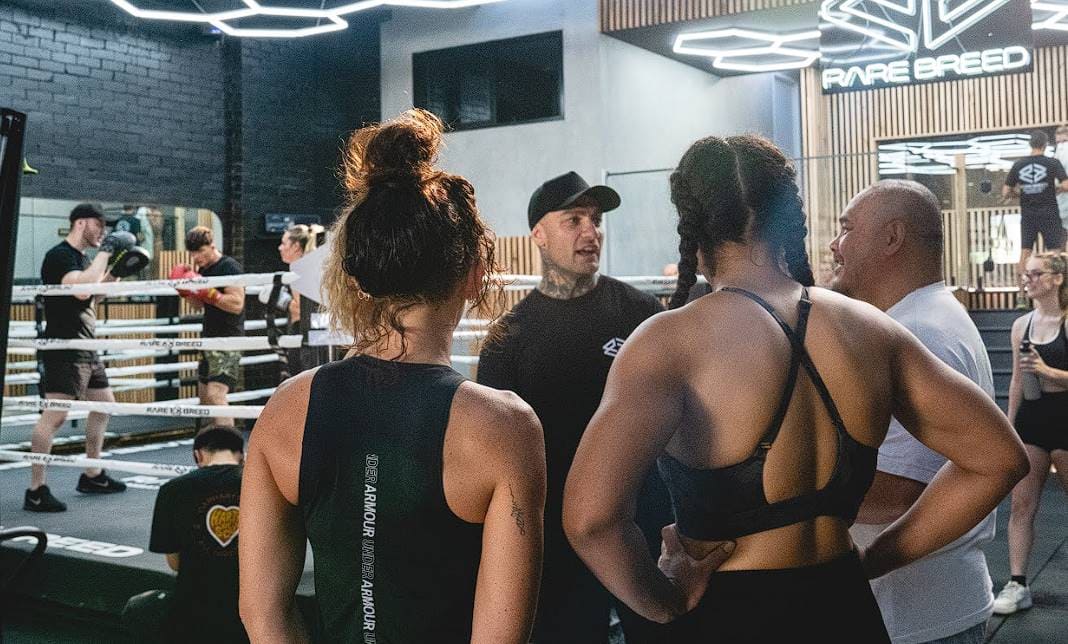
Training Heavyweight Boxers
Their joints grow rigid and sturdy due to the amount of force they must reduce with each movement as a result of undertaking these activities on a consistent basis. On the playing field, this can be quite beneficial to your performance, but it can be very destructive in the weight room.
FLEXIBILITY AND MOBILITY ISSUES
Tight joints will prevent athletes from achieving their full potential in flexibility and mobility, making them more prone to injury. In addition, the inability to subject the body to excessive strain in the weight room might stifle the development of strength and muscle.
Athletes taller than average typically have longer limbs, particularly around the thigh area. Compared to the length of the hamstring, having a longer thigh bone can make it difficult to move the hip. It can lead to problems with the core's stability and the function of the glutes, both of which are essential for delivering a powerful punch.
STRENGTH TRAINING STRATEGIES
When it comes to reducing tightness, pain, and the risk of injury, taller athletes need to emphasise the mobility of their hips and ankles. Yet, some forms of exercise need to be considered to ensure that physical performance improvements are made.
BODYWEIGHT EXERCISES
In general, the strength-to-bodyweight ratio of a heavyweight boxer will be lower than that of a boxer competing at a smaller weight class. When practising for or playing in their sport, a larger athlete will be subjected to greater compressive and reactive pressures than a smaller athlete.
With this in mind, the athlete with the greater height must be capable of supporting their body weight. In addition, the athlete's coordination, mobility, balance, and stability can all be challenged by exercises that use only their body weight.
The following is a list of important bodyweight exercises for heavyweights to master:
- Push Ups
- Bodyweight Squats and Lunge Variations
- TRX Row Exercises
- Chin-Ups
- Single-Leg Box Squats and Other Exercises
MASTER THE SQUAT
Because of hip mobility and core stability concerns, squat depth might be compromised. These issues were mentioned earlier.
In addition, having hip flexors and hamstrings that are hyperactive can cause an exaggerated forward lean, which can cause fatigue in the core stabilisers and increase the risk of lower back pain and injury. Finally, the parallel squat is more difficult because a taller lifter will likely endure an average of 25 per cent more hip extension pressures from the movement than a shorter athlete.
Despite this, developing your squat pattern is still very crucial. When working with taller athletes, we incorporate a variety of squats known as the goblet squat. The athlete can attain a deeper squat by adding weight in front of their body, which acts as a counterweight and helps them reach a deeper squat.
We will attempt to graduate the athlete to box squats, or Anderson squats from pins once they have mastered the goblet squat and can perform it well. If you are a heavyweight athlete who needs to develop stronger and faster, there may be better options than the full-depth back squat, but we have some other excellent options.
MASTER THE DEADLIFT
An effective method for developing an athlete's lower-body strength and speed is to use a deadlift pattern that emphasises the hips as the dominant joint. Nonetheless, a taller athlete may be limited by a straight bar deadlift in the same way as a squat, as the force of an overhanging torso can affect the lower back.
Taller athletes will benefit from the trap-bar deadlift since it will result in less compression on the muscles in the lower back of athletes who struggle with mobility.
Because the trap bar has higher handles and a neutral grip, the athlete can begin the lift in a more advantageous position from a mechanical standpoint. With this exercise, a strong emphasis is placed on maintaining a higher hip posture, which enables taller athletes to retract their shoulder blades.
When we want to decrease the range of motion, we occasionally set the trap bar on one or two lifting blocks. It enables the athlete to lift heavier loads and attain better positions.
Conditioning Strategies
Up to this point, we've gone over some of the most important constraints and approaches involved in strength and mobility training for heavyweights. Yet, we also need to think about getting our heavyweights in shape so they can repeat high-intensity attempts for as many as 12 rounds without tiring out.
As a result of their increased body mass, heavier athletes will be subjected to greater compressive and reactive pressures throughout their limbs, whether they are preparing for or competing in their sport.
As a result, running at a high intensity will cause a significant amount of shear impact force to be transmitted through the lower limbs' bones, tendons, ligaments, and muscles.
In addition, running at a high volume will increase the time an athlete is subjected to these impact forces. Because of this, the possibility of injuries connected to this, such as stress fractures, can grow.
When a boxer or combat athlete is already experiencing a lot of impact forces in their boxing training, such as through movement, footwork, and punching, off-feet conditioning may be a better alternative for them. Off-feet conditioning involves exercising without using the feet.
Rowing and swimming are two activities that may be good substitutes for high-intensity running; nevertheless, they both require a certain level of expertise, and technique is frequently the limiting factor when obtaining high intensities.
As a result, we choose to perform our conditioning on the WattBike since it enables athletes to achieve high intensities with relatively moderate levels of technical strain, making it an excellent catalyst for improving their aerobic fitness.
We will increase the heavyweight's fitness by performing sprints and high-intensity interval training on the WattBike. It will reduce the risk of experiencing excessive impact forces during running workouts, which can be avoided using the WattBike.
Developing a heavyweight boxer's fitness will also include periods of circuit training. It will provide some variety in the training and help to prevent boredom.
Conclusion
Heavyweight boxers capitalise on the benefits of their larger stature by increasing the amount of muscle they have while also working to mitigate the drawbacks of their physique by maintaining a rigorous training regimen.
Training like a heavyweight benefits boxers of all weight classes since it helps them improve their skills. Even inexperienced boxers can begin reaping the benefits of heavyweight training by performing these very straightforward routines.
Are you prepared to begin your preparation to compete at the heavyweight level? You will be emotionally and physically challenged by the hundreds of boxing, kickboxing, strength, conditioning, healing, and stretching workouts available.
Frequenly Asked Questions
How long does it take to train like a heavyweight boxer?
The time required to train like a heavyweight boxer varies depending on individual factors such as current fitness level, experience, and goals. It takes years of consistent training, discipline, and dedication to develop the skills and physical attributes required for heavyweight boxing. Progression in boxing skills, strength, endurance, and overall performance is a gradual process. With proper guidance, consistent training, and a focus on continuous improvement, individuals can make significant strides in their boxing abilities over time.
Are there specific training methods to enhance mental toughness in heavyweight boxing?
Mental toughness is essential for heavyweight boxers to overcome challenges and perform under pressure. Techniques like visualization, positive self-talk, and goal setting can help improve mental focus and confidence. Engaging in mindfulness practices, such as meditation or deep breathing exercises, can help boxers stay calm and composed in the ring. Working closely with a sports psychologist or mental performance coach can provide valuable strategies to enhance mental toughness and optimize performance.
Should heavyweight boxers focus on specific weightlifting exercises?
Heavyweight boxers can benefit from a well-rounded weightlifting routine that targets different muscle groups. Exercises such as squats, deadlifts, bench presses, and overhead presses help build overall strength and power. Additionally, incorporating exercises that target the core, back, shoulders, and legs can enhance boxing-specific movements and stability in the ring. Working with a qualified strength and conditioning coach who can design a program tailored to the boxer's specific needs and goals is important.
How can heavyweight boxers improve their punching power?
Improving punching power involves a combination of strength training and technique refinement. Boxers can develop their punching power by performing exercises such as weighted medicine ball throws, resistance band exercises, plyometrics, and compound lifts like squats and deadlifts. These exercises help build overall body strength and explosive power. Additionally, boxers should work on refining their punching technique, including proper weight transfer, hip rotation, and generating power from the core. A skilled boxing coach or trainer can provide specific guidance to improve punching power effectively.
How important is cardiovascular fitness in heavyweight boxing training?
Cardiovascular fitness is crucial for heavyweight boxing training. Boxing matches require sustained high-intensity effort over several rounds, and a strong cardiovascular system is necessary to maintain stamina throughout the fight.
Cardiovascular fitness training involves running, skipping rope, cycling, and high-intensity interval training (HIIT). Building a solid aerobic base improves endurance, allows boxers to recover quickly between rounds, and helps them perform at their best during intense exchanges.
